How to Choose the Best Type of Siding for Your House
Siding on a home plays a huge role, as it can enhance or detract from the overall appearance of the house, but it also protects the home, its occupants and possessions. When the time comes to have your siding replaced, you are sure to have many questions that need to be answered so you know how to choose the best siding for your house.
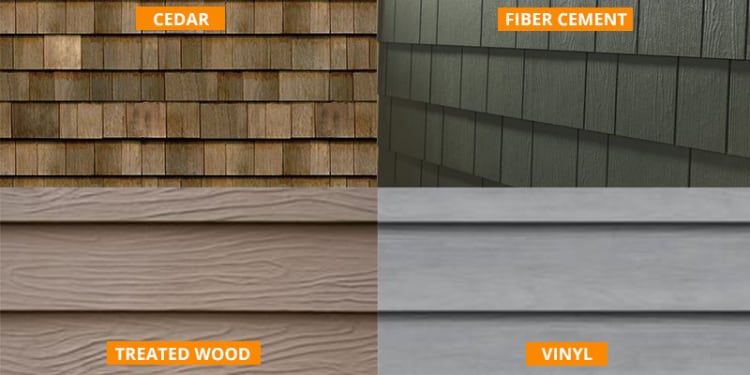
There are so many different types of house siding on the market today that it can be a daunting task to choose the best for your home. Picking siding for your house might begin with selecting options that fit your personal tastes, or perhaps your budget, and fortunately siding comes in many different shapes, sizes, colors and at different prices, so there is something for everyone. There is also the trim to consider, as it needs to meld in with the new siding.
When you get the right siding, it’s going to boost the curb appeal of your home, but also provide insulation advantages, more comfort in the home and years and years of protection. From vinyl to cedar, fiber cement to a blend of wood and other materials, the following information will fill you in on all the siding options on the market today.
Table of contents:
- WHY IS IT IMPORTANT TO PICK THE RIGHT TYPE OF SIDING MATERIAL?

-
WHAT ARE THE DIFFERENT TYPES OF SIDING AVAILABLE ON THE MARKET TODAY?

- HOW TO CHOOSE BETWEEN HOUSE SIDING OPTIONS?

- WHAT ARE THINGS TO LOOK FOR WHEN PICKING NEW HOME SIDING?

- WHAT IS THE BEST SIDING FOR YOUR HOUSE?

- EXPERT ANSWERS TO YOUR FREQUENTLY ASKED SIDING-TYPE QUESTIONS

Why is it important to pick the right type of siding material?
There are many different kinds of siding and it’s important that you get the right type for your house. The best siding materials are made by manufacturers who invest heavily in research and development. These are companies that have a reputation for making durable products that look great and last a long time. Siding materials range from the most popular option, which is vinyl, to the up-and-coming fiber cement to age-old cedar. There is also a fairly new type that is a composite material made with real wood and many other ingredients.
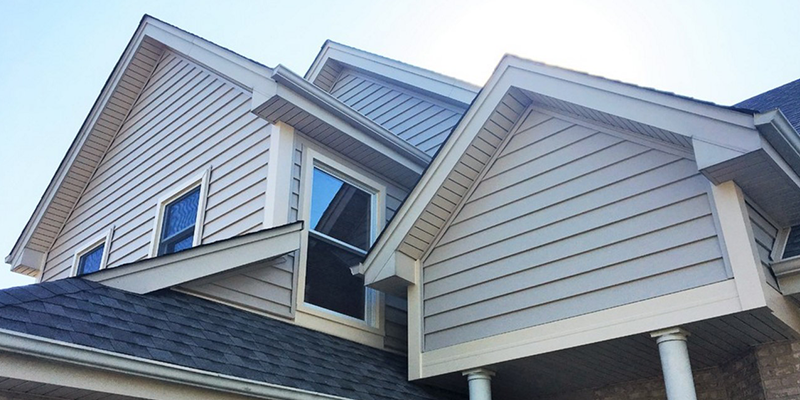
As you research the different types of siding, consider what looks best to your eye, as you’ll be living with this as the facade of your home for a couple of decades or longer. You also need to consider what will look good on your type of house, as architecture can help determine what works and what doesn’t. Also, talk to your contractor about why one type of siding would be preferable, as they have years of experience and should know exactly what you need.
There is also your budget to consider. Vinyl siding is popular because it comes in so many shapes, sizes and colors, but the fact that it is the most budget friendly is probably why vinyl is on more homes than any other type of siding material.
The top factors that should inform your decision on siding type:
- Your budget
- The amount of time, energy and money you have for maintenance
- How the material will impact your utility bills
- The comfort related to insulating properties of the siding
- Goals related to achieving ENERGY STAR® qualification
- Curb appeal
- Property value improvements
While there is the obvious aesthetic value involved with having new siding installed on your home, siding also protects everything inside your home, makes you more comfortable due to its insulating value and can save you money on utilities.
What are the different types of siding available on the market today?
If you’re just starting your research on siding, you’re probably wondering what are the different types of siding available on the market today. You’re also probably curious about the best type of siding for a house like yours. Fortunately, there are many different siding styles available today, so you’ve got plenty of options – and that might be the problem for some people – how do you choose!?
Despite the many different types of materials available today, only three are used on most homes throughout the U.S. Vinyl, fiber cement and wood are far and away the most popular. There are other options that deserve a mention, including metal siding, stone veneer siding and brick siding, but these aren’t nearly as popular as the first three. The following information should give you a better idea of your options.
Common six siding options:
Vinyl siding
Topping the list is vinyl siding because it is by far the most popular. It is the least expensive, easiest to install and it is made in a variety of shapes, sizes and colors. It’s easy to sell a homeowner on vinyl siding because everyone is familiar with it, as it has been on the market for many decades. It is easy to maintain and fairly durable. Homeowners on a tight budget are likely to choose vinyl because it keeps material costs down, and the fact that it is easy to install makes it less labor intensive, which also saves money.
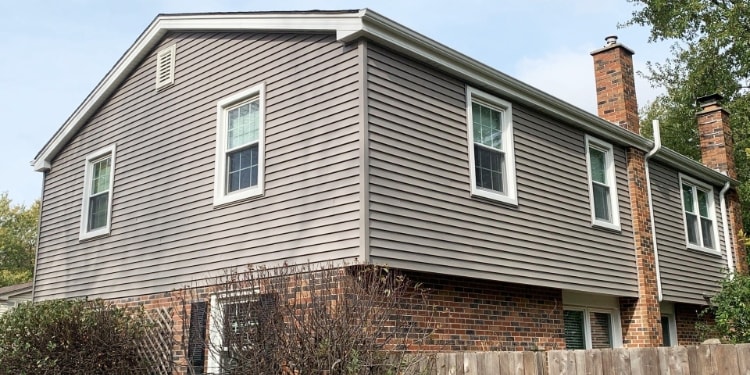
There are many, many different vinyl siding styles, which means you are sure to find the one that suits your personal tastes. Keep in mind that vinyl siding is going to be more susceptible to damage when something hits it. For example, hail damage is fairly common and can drastically reduce the life of your siding.
Shake siding
Manufacturers are doing such a good job with vinyl these days that their vinyl shake siding looks like real wood, though painted. Basically, the shake looks as if individual pieces of wood have been overlapped on the home, just like real cedar siding. If you want to keep the costs down but really like the look of cedar shake on homes, you can achieve your aesthetic goals and save money by using a vinyl shake.
Wood siding
From clapboards to shakes, shingles to board and batten, there are real wood siding options out there that bring a variety of different looks to home. Wood siding types are numerous, but they all offer that natural, warm appeal that is timeless. Wood siding isn’t for the homeowner on a tight budget though – it is a premium option that raises material costs substantially, but it also takes time to install, which means you’ll be paying more for labor.
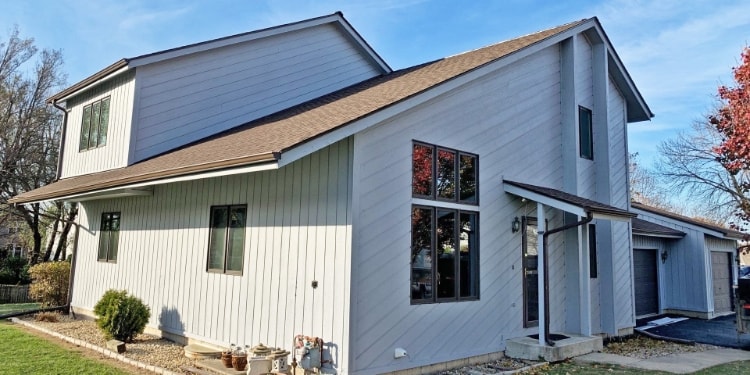
There are several types of wood used to make siding today. The most popular is cedar, but homeowners also have options with redwood, oak, spruce, fir, pine and cypress. Your siding contractor can work with you to find the one that will be a good fit for your home and your specific tastes.
Natural wood siding
Natural wood siding offers a look that is best described as “classic.” For some homeowners, there is no other option because of the unique qualities one gets from natural wood. However, it does come with the required maintenance that other siding types don’t need. Kept in its natural form (not painted), wood needs to be treated regularly so it doesn’t fall victim to pests, such as insects. Flame retardant can also be applied on the wood, so it is at less risk of fire damage.
The bonus of using natural wood is that when you do a good job maintaining it, it can last around 40 years. Proper maintenance involves annual inspections where problem areas can be managed. For example, if a board is beginning to rot, it needs to be removed and replaced immediately so other areas aren’t “infected” by the rot. Many homeowners will either paint or stain their natural wood siding every four to six years to extend the life of it.
Different types of natural wood siding will have different properties. For example, redwood and cedar are resistant to decay, which explains why these are two of the more popular wood siding types, but they’re also more expensive. Another popular option is clapboard siding, usually made of spruce, pine or oak. These wood planks are installed like traditional siding and the homeowner can either stay with the natural wood look or choose to paint or stain them.
Cedar siding
Among the more premium natural wood siding options on the market, today is cedar. This wood provides that classic rustic look that so many homeowners desire. And while the appearance is something to behold, cedar is also known for its dependability. This wood will hold up to rain, snow, sleet and high winds. Unlike other wood types that are not the best at holding up to moisture, cedar has no problem and will keep the rain out.
There is also versatility in regard to how cedar looks, which can be achieved by a contractor experienced in installing wood, layering it in a specific manner to achieve different textures. But cedar is expensive to buy and it takes a skilled hand to install, which means there are labor costs that have to be considered. However, given its durability and long life potential, those costs can be offset, because choosing a less expensive and less durable siding material will involve taking on the cost of another siding project sooner than you would with natural wood.
Engineered wood siding
Engineered wood has grown in popularity with homeowners who want that real wood look, but without all the maintenance. Basically, engineered wood has real wood in the ingredients, but there are also other synthetic ingredients involved in the composite wood product, which does not require treatment for pests or organic growth and is also resistant to fire. Engineered/composite wood siding comes in 4x8 foot panels, which are made with a variety of different textures. You can even choose an embossed product, which looks like real wood.
The other bonus to engineered/composite wood siding is that it is energy efficient and inexpensive compared to real wood. Furthermore, this type of siding is water resistant, is not at risk of pest damage and will also resist fungus growth due to the synthetic ingredients in the product. Most homeowners can expect their engineered wood siding to last between 20 and 30 years. Keep in mind to get the most out of it, engineered wood should be painted.
Fiber cement siding
Fiber cement siding is often referred to as “Hardie board” due to a popular brand, James Hardie, which makes fiber cement siding. Its popularity has grown rapidly because it is a highly durable product that comes in a variety of styles, including one that looks like real wood. While there are a variety of materials in fiber cement siding, the main ingredients are Portland cement, sand, cellulose fibers and water. There are a variety of other components involved to make it resistant to mold and mildew, fungus and pests.
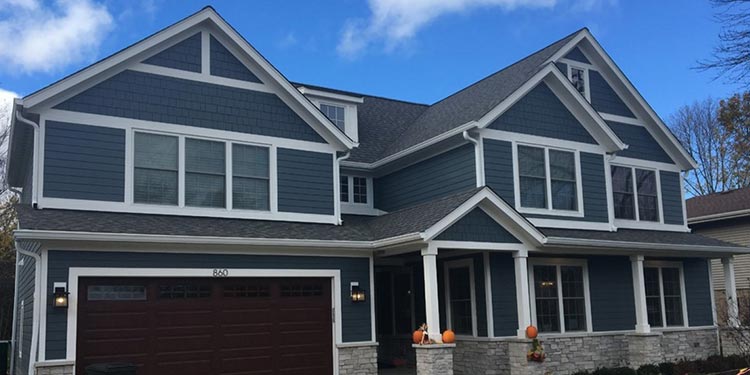
Another reason this product is so popular is that it comes in so many styles, including lap, shake, curved shake and plank. Fiber cement siding can also be made to resemble stone and brick. Many homeowners choose a style that actually resembles vinyl siding. But the biggest perk to this siding type is its projected lifespan, which can be 50 years or longer. But that can only occur when installed by a seasoned professional – fiber cement siding is definitely not a DIY material that novices should work with.
Metal siding
There are many clear advantages that metal siding offers that other siding types cannot. For example, metal doesn’t burn and insects don’t eat metal. Metal is obviously very durable, but it is also considered to be an energy-efficient option. And while metal siding has traditionally only been popular with structures like barns and outdoor buildings, homeowners looking for a unique aesthetic are increasingly choosing metal.
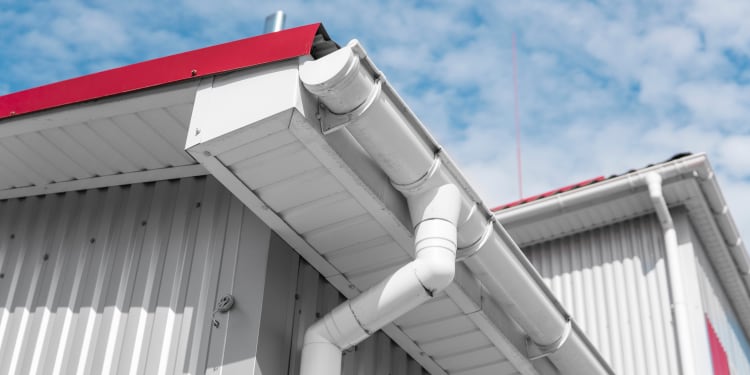
One of the cons of using metal is the expense related to it. Also, when impacted by large hail or heavy objects, metal will dent. And because it’s not a commonly used material, it can be difficult to find a siding contractor with experience installing it.
Copper siding
Copper is expensive, but it also provides a rich, warm hue that can be quite attractive on a home. While copper will develop a distinctive patina (blue/green color), it doesn’t corrode, which means it will last a long, long time. The orange color will eventually change into a deep brown and perhaps even a blackish hue over time. The patina will take effect in five to seven years in coastal areas (salty air) and 10 to 14 years in arid climates.
Steel siding
Steel is not a common option for siding on a home. Rather, this iron alloy is almost always reserved for outbuildings. However, there are companies that make steel siding that looks very much like vinyl siding. A zinc coating is applied to keep the product from rusting, which is what steel is prone to. Highly durable, steel doesn’t crack, melt or absorb moisture.
Aluminum siding
Before the advent of vinyl siding, many homes were covered in aluminum siding. And while it has taken a back seat to other types of materials, the market for aluminum has grown from $20 billion annually in 1995 to $151 billion in 2020. Aluminum is paintable, which means homeowners can choose among the many hundreds of paint colors on the market today. Aluminum is rot and pest proof and it is also weather resistant, which means it doesn’t expand and contract like other siding materials. It’s lightweight and easy to install and it’s recyclable.
Stone veneer siding
Stone looks amazing on a home, but it takes a highly skilled mason and tons and tons of stone to get the real thing installed as a facade on a home. This all adds up to a hefty cost. But to get that real stone look, homeowners can choose stone veneer siding at a fraction of the cost of real stone.
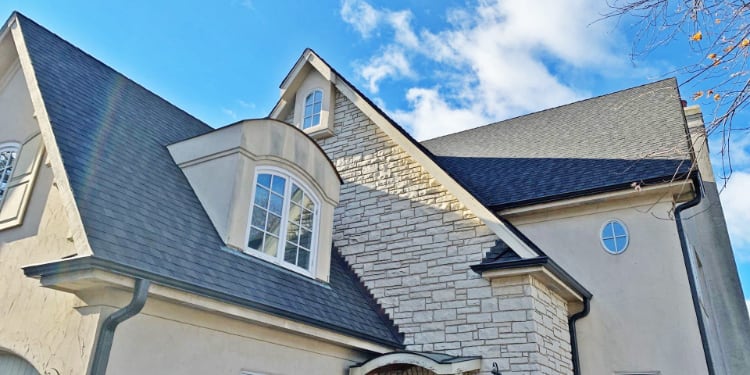
Seeking out a rustic and modern look? You can achieve that with stone veneer, which is easy to install and is durable as well as fade resistant. But rather than covering the entire home in veneer, most homeowners choose this product as an accent on specific areas of the exterior.
Brick siding
Brick siding achieves two important visual effects: modern yet homey. Unfortunately, solid brick siding is expensive and takes an accomplished mason to install it correctly. It’s one of the strongest building materials on the market, but tuck pointing is a common maintenance task that will eventually have to be carried out as the mortar weathers and crumbles.
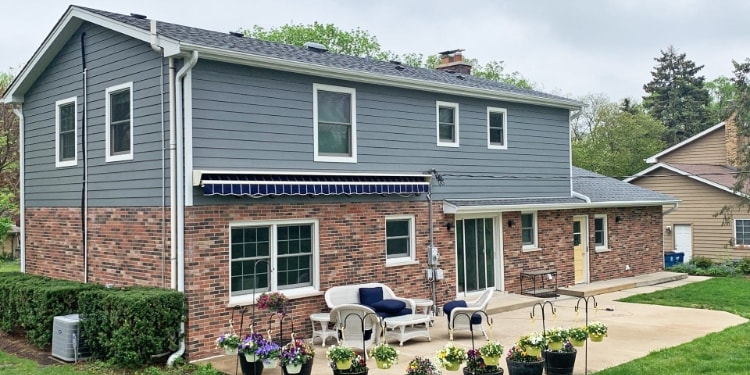
There is also thin brick siding to consider, which is sometimes called brick veneer. The bonus with using this option is that it is less expensive, yet you still achieve that real brick look. The downside is that it won’t hold up to the same damaging winds and debris that solid brick siding can withstand.
How to choose between house siding options?
There are so many house siding options that it’s normal to be perplexed when it comes time to make a decision. But there is a lot on the line, as the right siding will provide years and years of protection and help you achieve the visual appearance that suits your tastes.
While looks are important, including the color and style of the siding, you also have to factor in your budget, the durability of the siding and the maintenance it will require. Factoring in all these variables will help you create a list of types of exterior siding options that are right for you.
We’ve created the following sections to bring a better understanding of how to choose the right siding for your home.
What are things to look for when picking new home siding?
Because there are so many home siding types on the market today, it can be confusing to the first-time homeowner. The volume of information one needs to make the right decision can be daunting at best. Which siding fits in with the architecture of the home? Which siding will not only look nice but also fully protect the home?
The best residential siding material will come with a warranty and if you have a quality contractor on your side, they’ll only work with durable materials from trusted brands. With the following information, you will have confidence in your decision and your new home siding project will be a success.
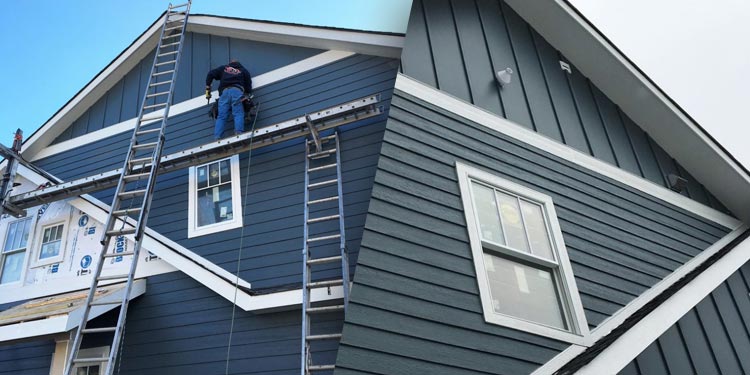
Top things to consider before you invest in new siding:
Weather and climate
Weather and climate are probably the most important factors in considering what type of siding you should put on your home. The amount of exposure a home has to rough weather is also something that needs to be considered, as a home shrouded in tall trees will not have the same needs as a home with zero protection that takes the full brunt of Mother Nature’s wrath, from heavy rains and hail to glaring summer sun.
If the homeowner is concerned about moisture buildup, choosing fiber cement siding will bring the weather resistance they desire, as fiber cement is a perfect match for wet climates, but it can also hold up to heat and humidity. A siding type to avoid in this situation would be wood siding, which is one of the more at-risk materials for wet climates.
Siding cost
A good place to start the decision-making process about which siding will be the best for you is with your budget. If your budget is tight, brick is probably out of the running, as are premium materials such as cedar planks. While the siding materials will factor into the decision, there is also the fact that some siding is more labor intensive to install, which also has to be factored in. Vinyl siding is one of the least costly on the market, but it’s also among the easiest to install, which is why it is so popular with so many homeowners.
And while everyone has a budget to stay within, you also must consider costs related to the life of your siding. For example, cedar siding costs more than vinyl, but it also lasts much longer (on average), which means it could actually be less expensive in the long run, which is important for younger homeowners who plan on staying in the home for decades.
There are also siding costs related to maintenance. Fiber cement is known for its durability and lack of maintenance needs, whereas natural wood needs to be treated and cared for on a regular basis. And while vinyl is less expensive to install, it is relatively easy to damage compared to other types of siding, which comes with a cost.
Siding appearance
It can be argued that the ability of siding to protect a home is its more important quality, but most homeowners will admit that what they’re concerned about is its appearance. The aesthetic alone can sometimes guide the decision process, particularly for those who have a specific look in mind, such as choosing solid brick or brick veneer.
Some types of siding will look better on specific types of architecture. For example, an A-frame home will look much better in cedar than it will in metal siding. A classic craftsman will look better in brick than it will in vinyl siding. Modern homes might benefit from a SmartSide panel better than they will from fiber cement.
Your siding choice might also be influenced by the look of homes in your neighborhood. Do you want to stand out from the rest by choosing something completely different, or stay with the status quo and fit right in?
Siding durability and lifespan
Most siding contractors put durability and lifespan at the top of the list of important aspects of siding. They want their clients to be fully protected and happy with their choice for many years to come, so they’re only going to recommend siding from companies they have worked with in the past and completely trust. Lifespan can be impacted by maintenance requirements, which is also something to consider. For example, fiber cement will require much less, if any, maintenance compared to real wood, which needs to be treated and inspected frequently.
Your return on investment grows exponentially when you choose siding that is durable and long lasting. If you’re leaning toward metal, just know that it is prone to denting, which can be a problem with homes that don’t have a windbreak. Vinyl, which is also at risk of hail damage, fades over time, which can impact your decision.
Energy efficiency
Feeling the draftiness in the winter months and the sweltering heat in the summer can be signs that your siding is ready to be replaced. New siding is energy efficient and can help you reduce your utility bills, but it also provides that boost of comfort during times of the year when the weather is going to extremes. Always check the R-value rating of the siding you’re interested in, as this will be an indication of its insulating abilities. The higher the number, the more energy efficient the product is.
R-value, which is the thermal resistance of a product, is around .61 on standard vinyl siding, but 3.0 or 4.0 on insulated vinyl siding, which is quite a bit more expensive than standard vinyl siding. Cedar has an R-value of around .81, whereas fiber cement siding has an R-value of .37. Ask your siding contractor about the most energy-efficient siding, options for insulated siding products and if they fit your budget.
Siding versatility
One of the reasons choosing the right siding is such a difficult issue for homeowners is that there are so many different styles. For example, James Hardie siding comes in 700 colors. In fact, most siding manufacturers will offer so many different color options that there is a very high likelihood that even the pickiest homeowners will find something they like.
Siding also comes in many different textures. For example, you can get metal siding that is flat, but you can also get it in a wood texture. Most siding manufacturers, knowing the preference for that real wood look, will offer a wood texture, whether it’s fiber cement, engineered wood or vinyl siding.
Shapes and sizes are also practically limitless, as is the technology built into some materials that make them resistant to pests and growth, such as mold, mildew and fungus.
Siding colors
While siding comes in virtually every possible color, there is no guarantee that the siding you choose from a specific brand will come in your favorite color. For example, you’ve opted for a James Hardie wood grain product, but the color you singled out as your favorite from the outset isn’t offered in that specific type of siding. Also, keep in mind that when choosing brick or stone, rarely do customers choose something other than the natural look, so don’t expect many color options there.
If you plan on painting your siding, keep in mind that there will be times when a specific color doesn’t look great on a specific type of siding. At VIS Exterior, we’ve had experience installing many different types of siding on homes that homeowners have painted and we know what color combinations work on specific types of siding, so we will consult with you about your options.
Siding maintenance needs
Some types of siding are prone to damage, which makes them a good candidate for regular maintenance. For example, real wood is susceptible to pests such as bugs. Birds have been known to damage siding as they peck away at the wood in search of the bugs. This is why real wood is treated for bugs every now and then. Wood also benefits from new paint or stain every other year, which is a cost that most homeowners don’t want to absorb.
Conversely, vinyl siding will not require such treatments as it is not a target for bugs or birds. It will, however, be at risk for damage during hailstorms. Vinyl siding, which only needs an annual cleaning in normal circumstances, is the preference for homeowners who do not want to have to stay on top of regular maintenance. Fiber cement siding similarly does not require much maintenance.
Regardless of the type of siding, having an inspection scheduled every year or two is a preventative maintenance task that can catch small problems that can be fixed relatively inexpensively. Without the inspections, small problems will grow into expensive ones.
Ease of siding installation
The easier it is to install your siding, the less expensive your project is going to be, as labor is the largest component of the siding project budget. Vinyl siding is light, making it easy to handle and easy to install. Fiber cement siding is heavier and requires more skill to install, making it a more difficult product to work with. One of the least easy to install is brick, which takes a high level of skill and a lot of time. If having your siding installed as fast as possible with the least amount of disruption and at the lowest possible cost is important to you, always choose siding that’s more like vinyl than brick.
Siding brand
Quality contractors will not use brands that have not been proven to be of value. The best brands do a fair amount of research and development prior to releasing a product. At VIS Exterior, we’ve had great success with quality brands like CertainTeed, James Hardie and LP Smartside. These are durable products that look amazing and always please our customers. Plus, they come with a warranty.
Resale value
The average person/couple purchases three homes over the course of their lives, which is why it’s smart to consider the resale value of a home when planning a siding project. While there are some home improvement projects that don’t do a lot to boost the value of a home, siding is one that does.
From vinyl to fiber cement, engineered wood to real wood, new siding can improve the value of a home for years and years. However, you won’t see the positive aspects of new siding if you don’t choose quality siding that comes with a warranty (the best ones can be transferred to new owners) and a contractor that can install it correctly.
Experienced siding contractor
Cut-rate contractors cut corners, which includes using inexperienced workers. This often results in poor workmanship that negatively impacts the performance and lifespan of the siding. It’s important to research your siding contractor, get references and see the quality of their work for yourself. At VIS Exterior, we choose our installation experts based on their skills and we keep them full time as trusted professionals that we can turn to time and again to produce stunning results. If you want to see examples of our work, we’ve got plenty to show you.
There are obviously many aspects of a siding project that need to be considered, but when you partner with a contractor that is highly experienced and is a good communicator, you can rest assured that every detail is fully explained to you and that you will be comfortable moving forward with your siding project.
What is the best siding for your house?
The best type of house siding is usually one that looks amazing to the homeowner, but is also durable enough to last for at least two decades. There are so many different types of siding from which to choose that homeowners often have a difficult time choosing.
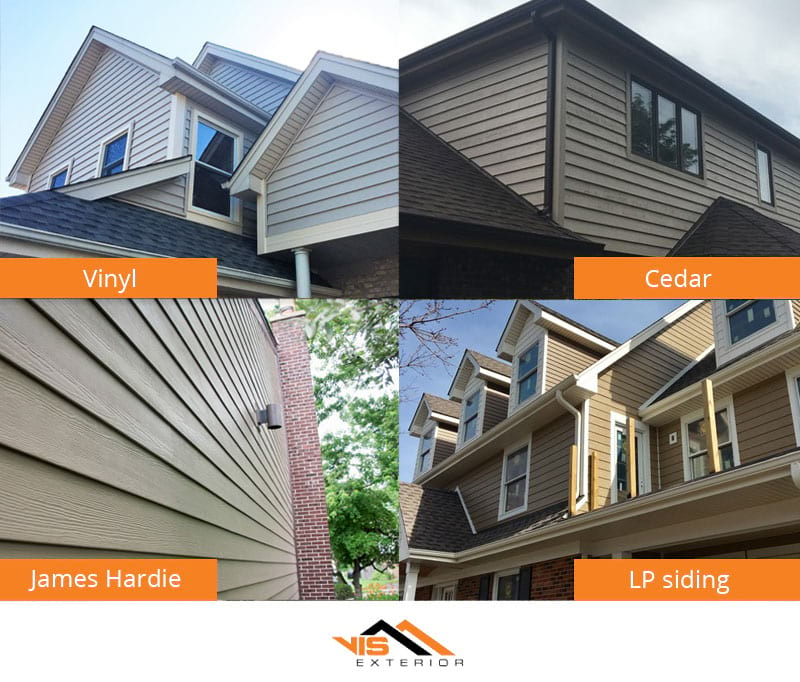
As a homeowner begins the journey regarding what is the best siding for a house, they can start by looking at their home’s architectural style and narrowing down the types of siding that work best on that style of home. They can then move on to material types and colors to further narrow the prospects that fit their personal aesthetic tastes. Another way to narrow down the list is to consider how exposed the home is to the elements. A home prone to lots of moisture will benefit from choosing a siding that works well in wet climates.
The best types of siding protect the home, add curb appeal and make the home more comfortable (lower utility bills). But there is no one perfect siding, as every home has different needs. We’ve listed the most popular types of siding below and the various aspects about them that should help you come to a list of finalists from which to choose.
Vinyl siding: long-lasting and affordable choice for your house
Despite the many different types of siding on the market today, vinyl covers about 30 percent of the homes in the U.S. There are many reasons for that, the first being cost. Vinyl is among the least expensive to purchase, and because it is light and easy to install, siding projects with vinyl have lower labor costs compared to other material types that are more difficult to install.
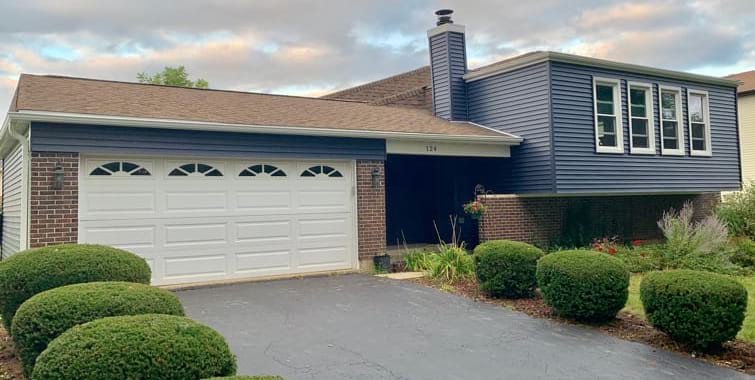
There are, of course, vinyl siding pros and cons that need to be revealed before you can make a final decision on this material. There are circumstances where vinyl fits your budget, but it doesn’t check other boxes, such as being highly durable. If your home is prone to taking the full brunt of hailstorms, you might consider choosing a material that has more resistance to impact.
Vinyl siding pros
One of the top vinyl siding pros is its low cost. When a homeowner’s top priority is keeping the budget at a minimum, vinyl is the material of choice. Second, on the list is versatility – vinyl siding comes in so many different styles and colors, which means if you’ve got an idea for the appearance of the facade on your home, there is almost certainly vinyl siding out there that fits it. At $2 to $4 per square foot and all the choices you have with vinyl, it’s tough to beat.
The main advantages of vinyl siding include:
- Ease of installation. Fewer chances for mistakes to be made, and it goes on fast
- Good insulator. Vinyl siding is also made with added insulation, and for that extra cost, you get better protection from the elements
- Added value. New siding, including vinyl, adds value to the home
- Versatility. Vinyl siding is made in many sizes, colors and styles
Vinyl siding cons
Vinyl is prone to hail damage and it will fade over time. These are probably two of the top vinyl siding cons customers will talk about. Also, if your contractor doesn’t work with quality vinyl siding manufacturers, your siding could crack when the temperatures drop to extreme levels in the winter months. Vinyl siding lacks the appeal that higher-end siding offers, so despite the fact that it comes in so many different styles, it doesn’t match the beauty of wood or brick.
Install CertainTeed vinyl siding
CertainTeed vinyl siding is among the more trusted brands that contractors use. Founded in 1904, this company has many years of research and development under its belt, and it shows in its siding products. The company keeps up with high demand with its 60-plus manufacturing sites throughout the U.S. and Canada.
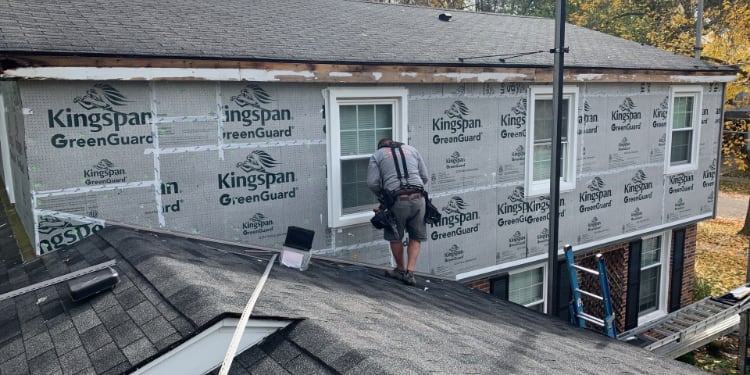
CertainTeed has four product lines, including CEDARBOARDS™ insulated siding, MAINSTREET™ panels, both of which are highly popular because they offer a classic cedar look or the Victorian stylings of clapboard, respectively. While vinyl is not generally considered to be a “green” product, the company has invested in its insulating properties, which is a plus for the eco-conscious.
CertainTeed vinyl siding installation is among the easiest for experienced contractors, which means it goes on fast, saving customers on labor costs. Another aspect of the product that customers appreciate is its limited lifetime warranty, which protects against manufacturing defects and hail damage.
To combat the fading aspect of vinyl, CertainTeed has added its PermaColor solution to its vinyl products, which provides fade protection. Regardless of what color you choose, and there are many offered, your siding will resist the harsh effects of the sun.
In the hands of the experts at VIS Exterior, all types of CertainTeed vinyl siding products are installed with an eye for perfection, which generates optimal outcomes that our customers appreciate.
Wood siding: a traditional choice for your house
Nothing quite beats the look of wood siding. It’s long been the choice of homeowners who want to attain that rustic look, but also want the warmth, classic yet modern appearance. While the natural wood look is the preference of many, wood is also very versatile, as it can be cut in any number of shapes and be stained or painted to suit anyone’s tastes.
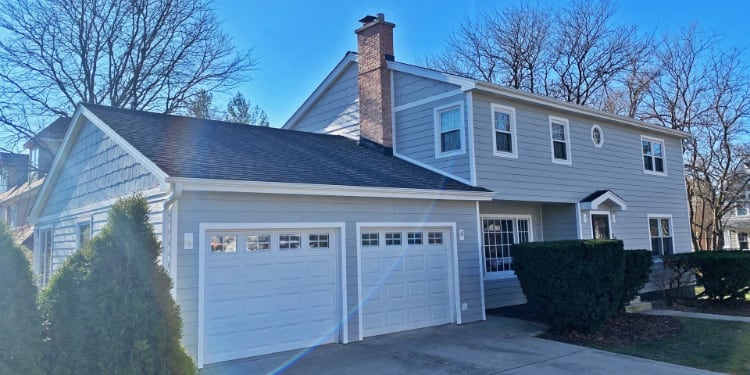
There are several wood siding pros and cons that need to be addressed before you make the decision about this product, as it is expensive compared to other siding types and buyer remorse would be significant if the wrong decision has been made. Yes, wood has always been a popular option and there are more choices with this material now than there ever has been, but read more to see if it will be a good fit for your home.
Wood siding pros
Wood siding pros begin with the fact that this material ages well, but it also lasts a long time – perhaps for the remainder of your time in the home. This is a siding material that will definitely boost the value of your home and make it stand out among the others in your neighborhood, which is a plus if you’re putting the home on the market.
The natural beauty of wood can’t give a boost to the value of a home. Wood is easy to shape to your house and install, and it can last for the life of your home, so long as it receives continual maintenance. Wood is also a very environmentally smart choice because it is made naturally and leaves very little carbon impact.
Wood siding pros:
- Versatility. From lap to shake, tongue and groove to board – siding manufacturers offer a variety of styles
- Eco-friendly. A sustainable material, wood siding production processes don’t include toxic chemicals
- Hardy types. Cedar is one of the most popular wood sidings on the market, but there are also durable and long-lasting types, including spruce, redwood, fir, pine and cypress
- Curb appeal. This high-end siding adds plenty of curb appeal and can improve the value of the home
Working with a quality contractor will help you make the decision on what type of wood you should install on your home.
Wood siding cons
Disadvantages of wood siding include the fact that this product, if it’s going to last, requires upkeep and maintenance. For example, wood siding needs to be treated to keep pests out of it, as bugs enjoy taking up residence in wood and birds will prey on them, causing damage.
At $5 to $9 per square foot, wood is on the expensive side and can put a strain on the budget for the project. The frequent maintenance represents ongoing costs that other siding types do not require. The look of wood siding will change over time if it is not stained or painted. This can be a benefit to some, but a detraction for others.
Install LP SmartSide wood siding
LP Smartside wood siding is an engineered wood product, sometimes referred to as composite wood, that offers resistance to many hazards that would otherwise shorten the life of siding, but it is just as popular with homeowners because of how it looks. LP wood siding will complement just about any home, as it is available in many different styles.
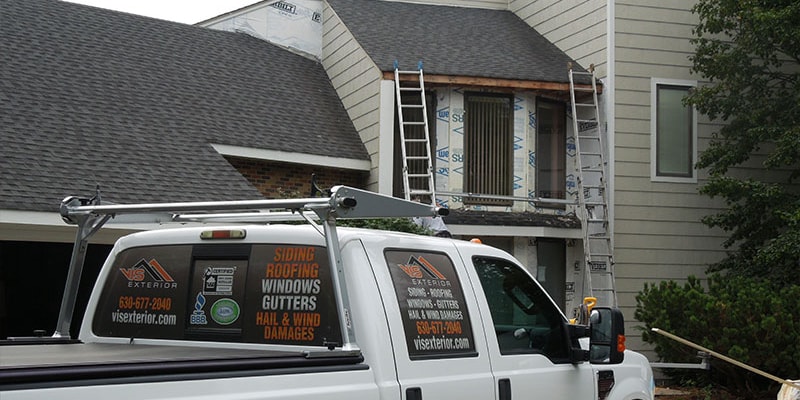
LP Smartside is a company that offers high-performance products that are a good fit for any type of home or building. The siding comes in around 30 standard colors, but there are also a variety of finishes from which to choose. For example, the lap siding comes in a cedar texture and smooth texture. For a less traditional approach, LP also makes panel siding. The company also makes quality trim, fascia, shingles and shake. The Premium Collection has gained a lot of attention for its real wood look.
Worried about your siding being damaged by airborne debris? LP SmartSide’s formula accounts for such occurrences and has made the siding impact resistant. To make the siding even more durable, it’s built to withstand extreme summer and winter weather. And for those who are focused on buying from companies that use renewable materials, LP has you covered as a participant in the Sustainable Forestry Initiative.
Fiber cement: versatile and durable choice for your house
Taking a completely different route from natural products, fiber cement siding is a product made with Portland cement and cellulose fibers, among other materials. The ingredients are pressed together to make a durable product that can be shaped into a variety of different shapes, including siding with a wood texture or a rustic, rough-hewn appearance.
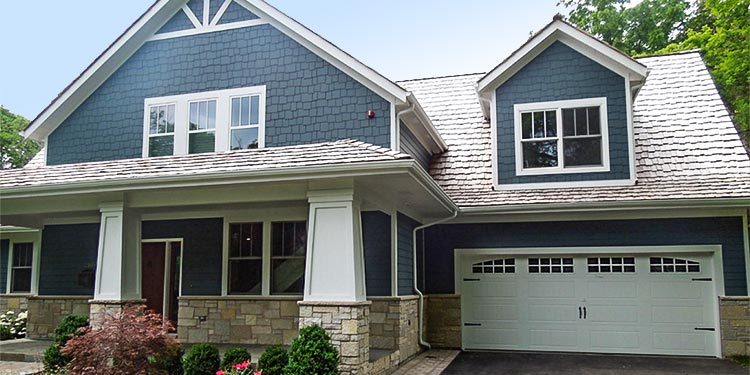
The look of the wood-textured siding is quite convincing, as it can be difficult to discern fiber cement siding from real wood, especially from a distance. For those looking to get away from the wood look, fiber cement siding can be made smooth to fit modern tastes.
Unlike other siding materials, fiber cement, when installed correctly, will not crack or swell. It’s also resistant to mold and rot, as there is no wood in the ingredients. Also, you don’t have to worry about the color fading, as James Hardie, one of the most popular fiber cement siding manufacturers, bakes in the color, giving it years and years of fade resistance. There are fiber cement siding pros and cons, which we’ll cover below.
Fiber cement siding pros
The benefits of fiber cement siding are numerous, but the reason most homeowners choose this material is a toss up between looks and durability. From being made to look like stucco to a siding product that looks so much like wood it’s difficult to tell the difference between it and the real thing – there are many designs to choose from. This siding is a favorite of contractors and homeowners alike because it is resistant to the effects of moisture, including high humidity. It’s also a favorite because of its fire resistance and because insects will not damage it.
Reasons why fiber cement siding is popular:
- Resistant to weather. It will hold up well in hailstorms, as well as high winds that whip debris through the air. It’s considered one of the best products for its impact-resistant qualities.
- Life span. Nobody wants to take on frequent siding projects, so when longevity is the goal, installing fiber cement siding is at the top of the list of potential materials.
- Resistant to pests. Insects want nothing to do with fiber cement, as it’s not a food source for them. Furthermore, birds seeking out insects will not be attracted to fiber cement siding like they are to real wood.
- Real wood appearance. Looking for that real wood look, but without the cost and upkeep? There are many fiber cement siding products on the market that have the realistic look of wood down to the grain texture.
- Versatility. Fiber cement comes in many textures and colors. From smooth, standard siding to wood siding to modern panels and stucco finishes, you get it with fiber cement siding.
To gain all the advantages of fiber cement siding, partner with a trusted professional with plenty of experience installing fiber cement.
Fiber cement siding cons
There are some fiber cement siding disadvantages that should be considered, such as the fact that while this product is touted as durable, it’s fairly new to the market, so there are no real-life experiences with how long it will actually last. It’s also a heavy product, which means it’s more laborious to move on the jobsite and can take longer to install.
One of the biggest fiber cement siding disadvantages is not due to the siding, but to inexperienced contractors who install it incorrectly, which can lead to cracks, chips and other damages that will need to be corrected.
Install James Hardie fiber cement siding
James Hardie fiber cement siding is among the most popular brands supplying contractors with this type of siding. It’s respected for its curb appeal and durability, which makes it a favorite. James Hardie has done plenty of research and development, creating a product that stands up to tough weather conditions through all seasons.
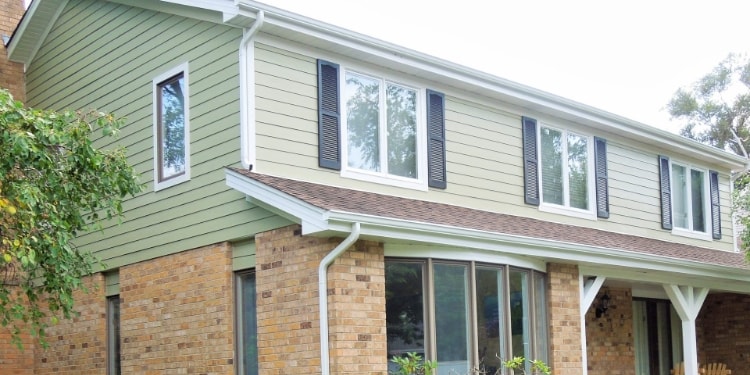
Homeowners’ tastes in siding are so varied that James Hardie has created something for just about everyone. There are so many styles, textures and colors from which to choose, you should have no problem finding a fiber cement product that suits your unique tastes.
Also, James Hardie siding installation services from a professional contractor will keep your siding in good standing for a long, long time, as this can be a difficult product to install without the right tools and know-how. Fortunately, when installed correctly there is little to no maintenance required, aside from cleaning it on occasion. This product is mold and mildew resistant, but regular cleaning will help to further prevent organic growth.
The 30-year, non-prorated warranty is also a bonus with this siding. Plus, you get the James Hardie ColorPlus Technology, which helps slow the fading effects of the sun, and it comes with a 15-year pro-rated warranty.
Need assistance with choosing your siding? Let VIS Exterior give you a hand. We’re experienced with installing all types of siding, including fiber cement and products from James Hardie.
Make the final decision: what siding type to install for the exterior of your home
We’ve gone through all of the popular exterior siding types and now that you’ve been informed of the options, which one looks the most attractive for your home? You’ve got the pros and cons on each and should have a better idea of what siding could be at risk on your home, as well as the siding that is well-suited for your situation, whether it’s an architecture issue or an issue regarding being at risk to the elements.
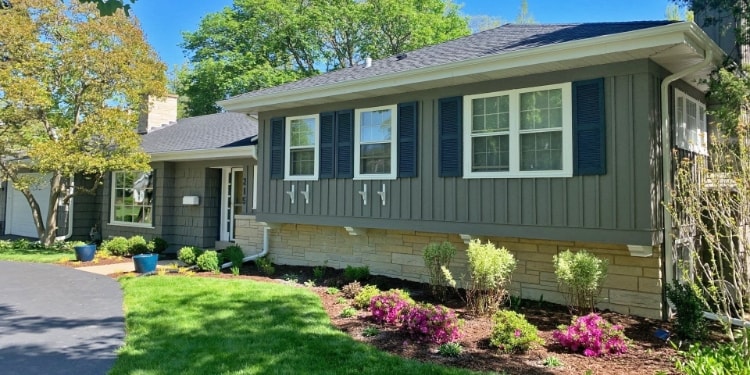
There are all types of warranties on all types of siding for houses, so be sure that you look closely at the warranties offered on your top choices before you make the final decision. When installed correctly and made by a quality siding company, siding can last for 50 years, but you want to make sure you’re covered by a warranty if something goes wrong. Also, if you’ve chosen a quality contractor, they will never choose a siding product that isn’t durable and doesn’t have a warranty.
All types of siding made today, whether it’s fiber cement, engineered wood or vinyl, is made to be weather resistant and come in a wide variety of colors, so in some cases, the most difficult aspect is based on which color you should opt for. Work with your contractor to discuss all the options and make a fact-based decision on the one that will look best on your house.
Siding is meant to preserve your home, but it can only do that if you’ve got a siding installation expert working for you. Even vinyl siding, which has the reputation of being “easy” to install, can only last as long as it is meant to if it is installed by an expert.
Need help choosing siding material? Hire a reliable siding contractor in DuPage County
After careful consideration, you’ve come to a consensus about the siding materials you want to use. You’ve established what type of siding is best for your home and now you need to find a contractor to install it. The decisions regarding the different types of siding are extremely important, but just as important is finding a reliable siding contractor – one that has experience working on a house like yours and one that is an expert at installing the type of siding you want.
The only way to ensure that your siding will last as long as advertised is to bring in a top-quality siding contractor to do the work. But what makes them a “top-quality” contractor? Look for one that is licensed and insured. Ask for these credentials and if they don’t offer them, look elsewhere. Also, ask for references and take a look for yourself at what they can do. Do they offer a workmanship warranty? While the best contractors rarely make errors, only choose one that will hold themselves accountable and will come back to fix any problem areas.
At VIS Exterior, our clients are able to check all the boxes on what they’re looking for in a siding contractor. DuPage County residents know us by our reputation as a contractor that takes every job seriously, no matter how big or small. We live and work in the area and are proud of the projects we’ve completed here over the course of nearly two decades.
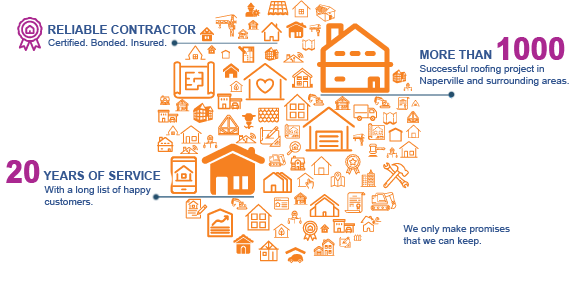
Expert answers to your frequently asked siding-type questions
Preparing for a siding project begins with more questions than answers, but you’ve come to the right place for quick and accurate information about what most homeowners want to know as they approach a siding installation.
What type of siding is the most popular?
Vinyl is by far the most popular siding in the U.S. There are several reasons for this, but the top one is that it doesn’t overwhelm the budget. Not only is the material one of the least expensive on the market, it’s light and easy to install, which reduces labor costs. The best house siding options are usually those that offer a variety of styles from which to choose, and vinyl certainly offers that. Other popular options in DuPage County include fiber cement, engineered wood and real wood.
What is the most durable type of siding?
James Hardie siding has a reputation as one of the most durable siding options. It’s made with fiber cement, which is resistant to everything from fire to insects, ultraviolet light to organic growth. To make the siding even more durable, paint can be applied. Brick and stone are more durable than the James Hardie products, but these materials are so expensive to acquire and work with, the average homeowner won’t have the budget for them. Talk to your contractor about what will work best on your home.
What is the lowest maintenance house siding?
All siding will need to be cleaned of dust and debris from time to time, but two of the lowest maintenance siding types are vinyl and fiber cement. Both are touted as being practically maintenance free. For homeowners who don’t want to invest time and money on maintenance, which is something that real wood requires, stick with vinyl or fiber cement. Also, you can choose siding that has already been colored, which removes the need for painting every five or so years and gives you the best maintenance-free siding.
What type of siding is the most energy efficient?
Aside from the roof, siding is the first layer of protection on a home. It’s what helps keep your interior temperature comfortable regardless of the time of year. The siding of all types will help you keep your utility bills from getting out of hand. However, wood and vinyl siding have been found to be the most energy-efficient siding.
But what type of siding is the most energy efficient? Some manufacturers will add a layer of insulation to their vinyl siding products, which adds to the overall cost of the material but gives the R-value quite a boost. Fiber cement has one of the lower R-value ratings.
What type of siding is the most fire resistant?
Fire-resistant siding is a bonus in any situation – you don’t have to live near a forest to deserve protection against flames. Fiber cement siding is fire resistant, as it is made with Portland cement. Metal is also a good choice for fire resistance, which makes aluminum a popular choice for those with fire resistance high on the list. Vinyl siding will melt under extreme temperatures, and although real wood can be treated as more fire resistant, it can’t hold up to flames as well as fiber cement siding.
What is the cheapest type of siding?
Homeowners on a budget will undoubtedly inquire, “what is the cheapest type of siding?” Vinyl has long been the most affordable siding. Not only is it cheaper to purchase, but it’s also less expensive to install, as it is light and relatively easy to work with. Anyone on a tight budget will most likely be pointed in the direction of vinyl by their contractor. And just because it’s cost effective doesn’t mean it lacks quality – vinyl siding will last a long time and looks great on a home. Keep in mind that if you choose insulated vinyl, it could be more expensive than other siding types.
What type of siding lasts the longest?
- Wood Siding: 20-40 years
- Vinyl Siding: 60-plus years
- Fiber Cement Siding: 50-plus years
What type of siding is best for the average home?
When you want a siding that will offer resistance to everything from pests to impact, choose fiber cement. This is what has been working best for the average home in recent years and the popularity of the material continues to grow. In general, the best types of siding for homes are those that can weather storms and sunlight, yet also look great on the home, and fiber cement can certainly do all of that and more.












